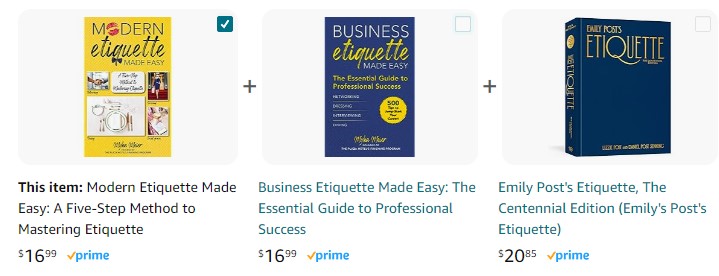Best 7 Rules Buffet Etiquette, Every Guest Should Follow

Buffet Etiquette is essential for a seamless dining experience. Discover the top practices in our comprehensive guide, which covers the best 7 rules to ensure a respectful and enjoyable meal. Learn how to navigate the buffet line, select portions appropriately, and maintain a pleasant atmosphere for all diners. Our tips will help you master the art of buffet dining, making every buffet visit a delightful and courteous adventure.
Table of Contents
Buffet dining presents a unique fusion of culinary diversity and communal experience. As tantalizing aromas waft through the air and a plethora of dishes beckon, it becomes paramount for every diner to navigate this smorgasbord with grace and consideration. “Buffet Etiquette” isn’t just about selecting food but encapsulates the very essence of respectful dining. This blog delves into the nuances of buffet manners, ensuring that your next trip to a buffet not only satiates your taste buds but also reflects impeccable decorum. Guide: How to Lose Weight Fast

Navigating the buffet line requires a strategic approach. Start by politely waiting for your turn, allowing others to select their dishes without feeling rushed. Remember to use the serving utensils provided and avoid using your personal cutlery to prevent cross-contamination. It is also important to take moderate portions of each dish, ensuring that there is enough for everyone to enjoy. Lastly, be mindful of your table manners while dining, avoiding loud conversations and keeping your space clean and tidy. Following these etiquette tips will enhance your buffet experience and showcase your respect for both the food and fellow diners.
1. Approach with Patience
Approach with patience is a crucial aspect of practicing good buffet etiquette. When faced with a crowded buffet line, it is essential to remain calm and composed, patiently waiting for your turn. Rushing or pushing ahead can disrupt the flow and create a chaotic environment. Furthermore, exercising patience allows everyone to have an equal opportunity to select their desired dishes. By respecting the space and time of others, we contribute to a pleasant dining experience for all. So, next time you find yourself at a buffet, remember to approach with patience and set an example of courteous behavior.
2. Using Serving Utensils Properly
Using serving utensils properly is an essential part of buffet etiquette. To ensure a smooth dining experience for everyone, it is important to follow a few simple rules. Firstly, always use the appropriate utensil for each dish, such as a spoon for soups and sauces, tongs for grabbing solid foods, and a serving fork for meats and vegetables. Secondly, remember to serve yourself from the front of the dish to avoid reaching over other items.
Additionally, it is courteous to place used utensils on a separate plate or rest them on the side of your own plate to prevent cross-contamination. Lastly, be mindful of others and avoid touching food with your hands or using the serving utensils as personal eating tools. By adhering to these buffet etiquette rules, everyone can enjoy a pleasant and hygienic dining experience.
3. Avoid Overloading Your Plate
Avoid overloading your plate at a buffet by following some simple etiquette rules. Firstly, be mindful of portion sizes and take only what you can comfortably consume. It is better to go back for seconds rather than wasting food. Additionally, remember to leave some space on your plate for other guests to access the dishes. Avoid piling food too high as it can lead to spills and messes. Lastly, prioritize variety and balance in your selection, choosing a mix of different dishes to create a satisfying and well-rounded meal. By adhering to these buffet etiquette guidelines, you can ensure a pleasant dining experience for yourself and others.
4. Being Considerate of Others
When it comes to being considerate of others, especially in the context of buffet etiquette, there are a few important rules to follow. First and foremost, it is essential to use the serving utensils provided and not use your own personal utensils to help yourself to the food. This ensures cleanliness and prevents cross-contamination. Additionally, it is important to be mindful of others in line and not cut in front of them. Waiting your turn demonstrates respect for others and maintains order.
Furthermore, it is courteous to take only what you can eat, avoiding excessive food waste. Lastly, it is crucial to keep the buffet area clean and tidy, placing used plates and utensils in designated areas. By adhering to these buffet etiquette rules, we can all enjoy a pleasant and considerate dining experience.
6. Properly Handling Used Plates and Utensils
Properly handling used plates and utensils is essential when it comes to buffet etiquette. Firstly, it is important to separate the used plates and utensils from the food waste. Place any leftover food in the designated waste bin and ensure that no utensils are left hidden in the food. Next, neatly stack the used plates and utensils together to make it easier for the staff to clear the table efficiently.
Remember to avoid leaving any food residue on the plates or utensils, as this can create a mess and make the cleaning process more challenging. Lastly, if there are specific instructions or designated areas for returning used plates and utensils, follow them accordingly to assist in maintaining a smooth and organized buffet experience.
7. Expressing Gratitude
When it comes to expressing gratitude, it is important to adhere to certain buffet etiquette rules. Firstly, always make sure to acknowledge the efforts of the host or hostess by expressing your sincere appreciation for their hospitality. Thanking them for the delicious spread and the time and effort they put into preparing the buffet is crucial.
Additionally, it is considered good etiquette to compliment specific dishes or highlight any standout flavors that you particularly enjoyed. Remember to express your gratitude to any additional staff members who may have assisted in serving or replenishing the food. Lastly, offering to help with the clean-up process or contributing to the next gathering can further demonstrate your appreciation. By following these buffet etiquette rules, you can effectively express your gratitude and leave a lasting impression on your host or hostess.

The Sensational Evolution of Buffet Etiquette
The Sensational Evolution of Buffet Etiquette takes us on a captivating journey through time, exploring the transformation of buffet customs from ancient traditions to modern-day norms. This intriguing exploration reveals how cultural influences and technological advancements have shaped our behaviors at the buffet table.
From the early communal feasts of ancient civilizations to the emergence of formal dining etiquette during the Renaissance, we witness the gradual refinement and sophistication of buffet practices. Furthermore, the advent of globalization and the rise of social media have introduced new dynamics, influencing our choices and behaviors at the buffet. Join us in unraveling the captivating story of buffet etiquette, a testament to the ever-changing nature of our dining rituals.
Ancient Beginnings
- Ancient Civilizations: The earliest forms of buffets can be traced back to ancient civilizations where feasts were held, and large quantities of food were presented for guests to choose from. While not “buffets” in the modern sense, these gatherings had their own protocols, often based on social hierarchies and rituals.
- Medieval Europe: As feasting became more sophisticated in medieval Europe, there would often be large spreads of food from which guests could serve themselves. However, the emphasis was more on abundance and display rather than individual choice.
Rise of the Modern Buffet
- 19th Century Sweden: The modern buffet is said to have its roots in 19th-century Sweden with the “smorgasbord” – a spread of bread, butter, cheeses, herring, and other cold dishes. It started as a way for hotel guests to mingle before meals.
- 20th Century America: Buffets gained popularity in the United States in the early 20th century, particularly with the advent of Las Vegas casino buffets in the 1940s. They offered an affordable way to feed large numbers of people with varying tastes.
Contemporary Buffet Etiquette
- Wait Your Turn: Modern buffet etiquette emphasizes patience and order. Guests typically wait in line and serve themselves in the order they arrived.
- Use Serving Utensils: For hygienic reasons, there’s a strong emphasis on using the provided serving utensils rather than personal cutlery or hands.
- Take Reasonable Portions: While buffets offer an abundance of choices, it’s considered good etiquette to take only what one can eat to reduce waste. If more food is desired, it’s acceptable to return for seconds or even thirds.
- Mind Personal Space: Especially in crowded settings, it’s important to give others adequate space while they’re serving themselves.
- Respect Food Allergies and Dietary Restrictions: Many buffets now label dishes that may contain common allergens or are suitable for vegetarians. Being aware and not cross-contaminating foods is a subtle yet essential part of buffet etiquette.
The Future of Buffet Etiquette
- Health and Safety: In the wake of global events like the COVID-19 pandemic, buffets have had to rethink their approach. There’s a heightened emphasis on hygiene, with some buffets opting for staff to serve guests rather than allowing self-service.
- Sustainability: As awareness of food waste grows, future buffet etiquette may place even more emphasis on taking only what one can consume and perhaps even integrating more sustainable, locally-sourced foods.
In conclusion, the buffet as a dining concept has seen significant transformation over the years, and with it, the manners and customs surrounding it. While the core principles of respect and courtesy remain unchanged, the specific etiquettes evolve to meet contemporary challenges and values.
FAQs
Q: How should I approach a buffet line?
A: Always approach the buffet line in an orderly fashion. Wait your turn, and follow any direction markers or signs. Never cut the line.
Q: Can I use my own personal cutlery to pick up food?
A: No. Always use the serving utensils provided for each dish to maintain hygiene.
Q: Is it okay to taste a dish before taking a portion?
A: Generally, it’s not appropriate to taste from the serving dishes at a buffet. Serve a small amount on your plate if you wish to try something new.
Q: How much food should I take in one go?
A: Take only what you can eat to avoid wastage. It’s acceptable to return for seconds or even thirds, but start with reasonable portions.
Q: Can I go back to the buffet multiple times?
A: Yes, you can return to the buffet multiple times. Just be courteous and wait your turn each time.
Q: How do I handle dishes I’m done with?
A: Check the venue’s setup. Some buffets have areas where you can leave used plates, while others prefer you keep them at your table for staff to collect.
Q: Can I take food home from a buffet?
A: Most buffets have a policy against taking food home to ensure food safety and prevent overconsumption at the buffet table. Always check with the establishment first.
Q: What should I do if I spill something?
A: Accidents happen. If you spill something, notify a staff member immediately so they can handle the cleanup and prevent any slipping hazards.
Q: Are buffets safe in light of health concerns, like COVID-19?
A: Many buffets have adapted to health concerns by implementing stricter hygiene measures, such as having staff serve food, providing hand sanitizers, or placing guards over food. If you have concerns, check with the establishment about their health and safety protocols.
Q: How do I navigate a buffet if I have dietary restrictions or allergies?
A: Many buffets label dishes with ingredients, especially common allergens. Always check labels, ask staff if you’re unsure, and be cautious of cross-contamination.
Q: Is it rude to skip the line if I just want one specific dish?
A: Yes, it’s generally considered impolite to skip the line. Everyone is waiting, and it’s courteous to wait your turn, even if you want just one item.
By being aware of and following buffet etiquette, you can ensure a pleasant dining experience for both yourself and others around you.
What's most important to you in a buffet?
Value for money - 9.6
Food quality - 9.3
Assortment of dishes - 9
Buffet location - 9
Comfortable interior - 9
9.2
The choice of most buffet visitors
If you and your family or friends are choosing a buffet, what criteria do you first pay attention to? What exactly is important for you before deciding to visit a buffet.






